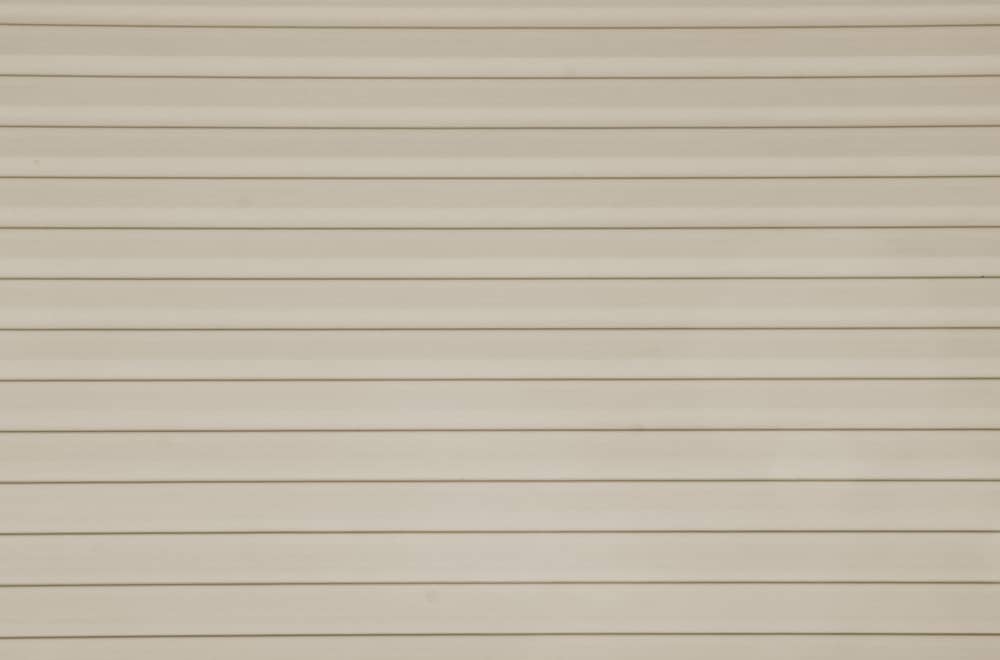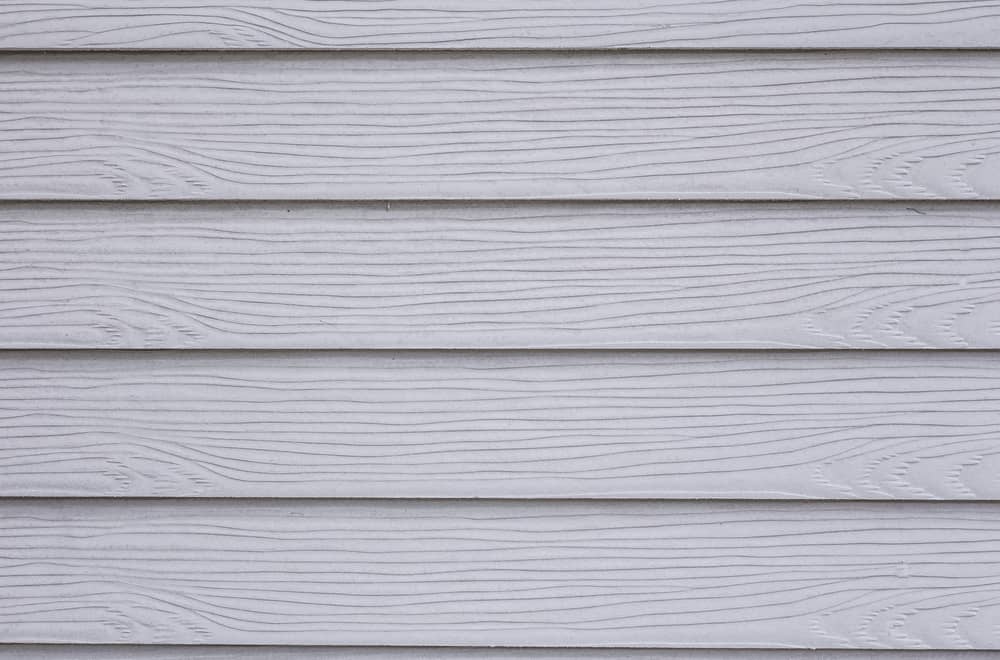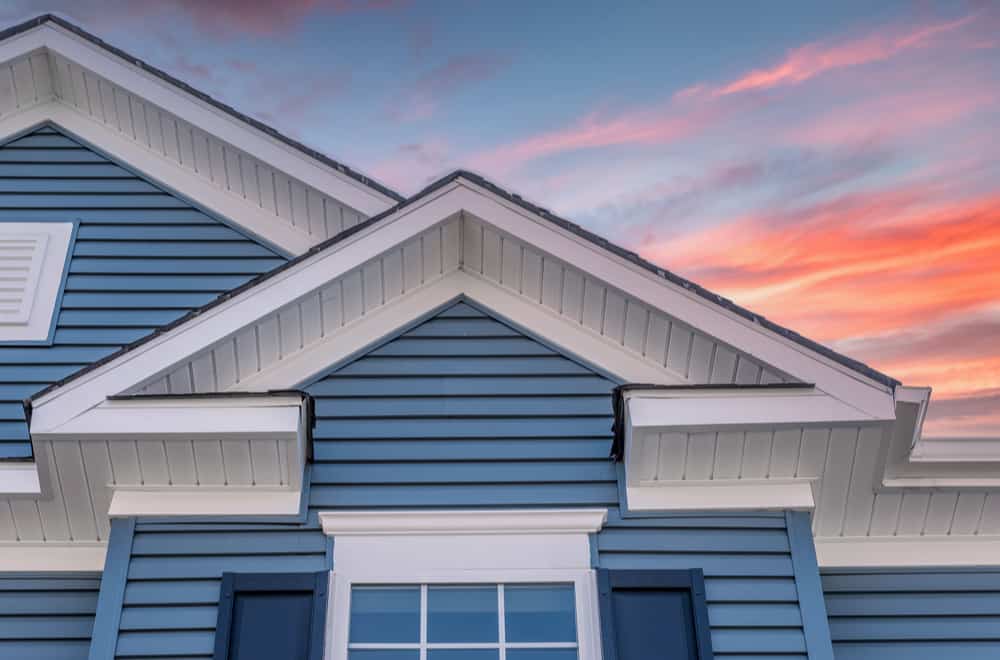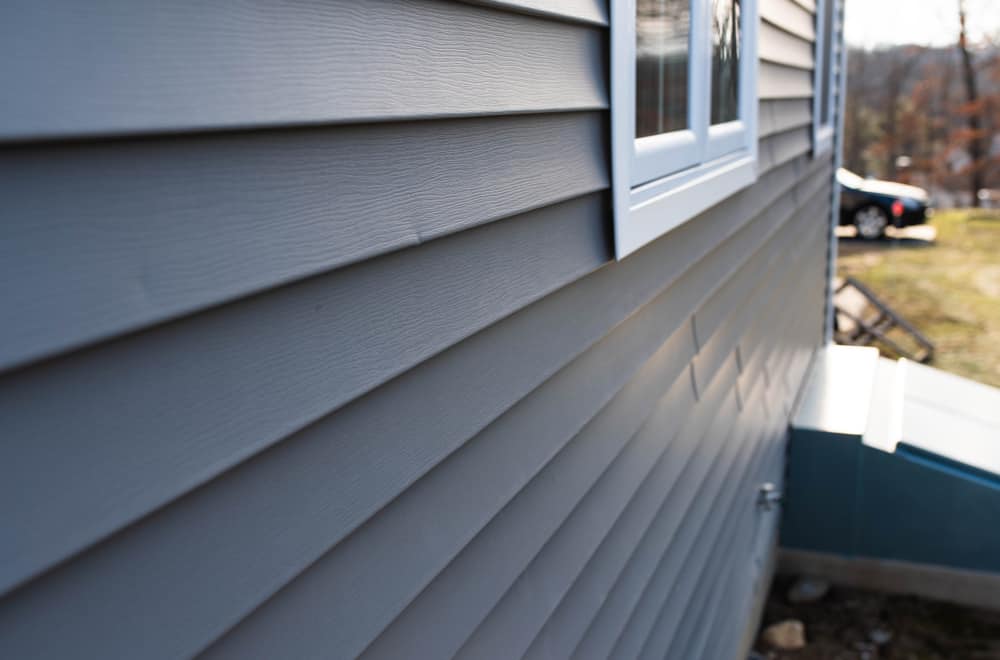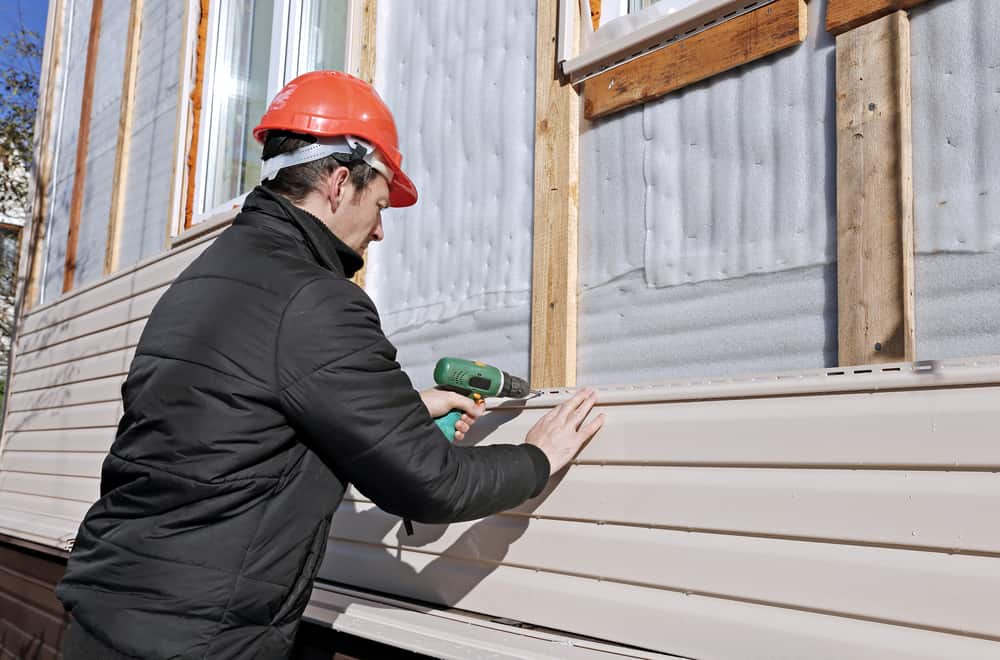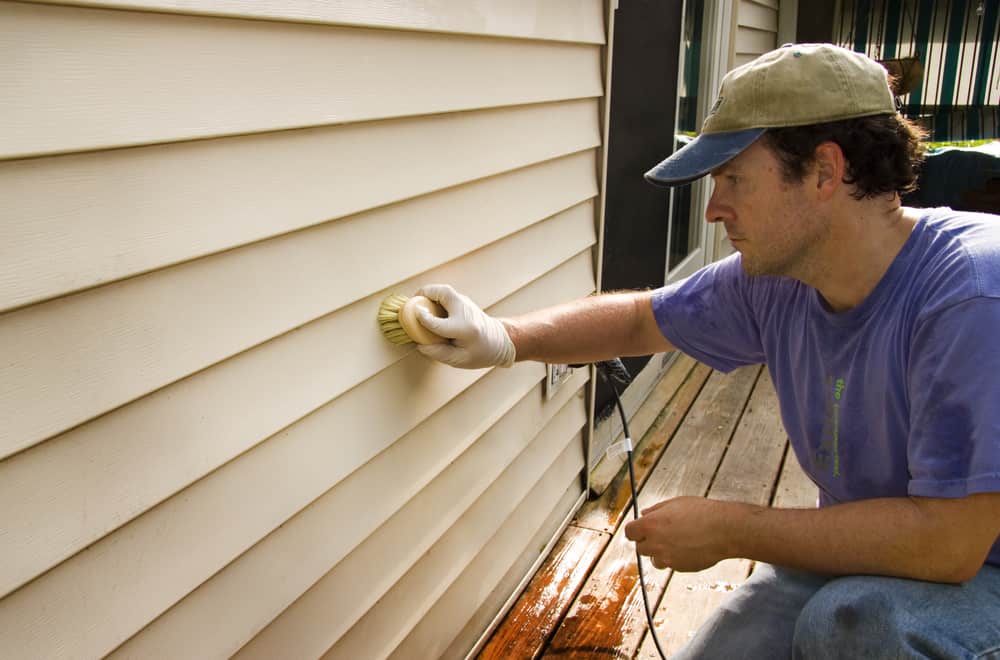Trying to decide on what siding to use to adorn your housing exterior? Both vinyl sidings and Hardie board provide your home with protection as well as aesthetics. But choosing one of these two siding options is quite difficult as both come with an impressive list of advantages.
However, there are quite a few differences between these sidings. And if we pinpoint these differences, we believe that it would be a whole lot easier for you to make your final decision.
So, what are we waiting for? Let’s dive deep and dissect the properties of these two siding options meticulously!
Table of Contents
What are Vinyl Sidings?
Vinyl sidings are primarily made up of Poly Vinyl Chloride (PVC). These revolutionary sidings materials are cost-effective, moisture-resistant, and offer a variety of exciting designs.
Generally, furrows strips are installed at appropriate distances on the exterior before attaching vinyl sidings to the wall. Doing so ensures that there is enough space to attach insulation boards as vinyl siding is not a great insulator by itself.
What are Hardie Boards?
Hardie boards, often called fiber-cement boards, are made up of sand, cement, and wood pulp. Unlike vinyl sidings, you can nail these claddings to your home exterior as you don’t have to take into consideration the expansion and contraction resulting from surrounding temperature changes.
First appeared on the commercial market around the mid-1980s, these fiber-cement boards have been catching the attention of many homeowners since then. And, we aren’t surprised either – the pros list of these boards is quite impressive.
Vinyl Siding Vs. Hardie Board
Now that we know what vinyl sidings and Hardie boards are, let’s dive deep and find out how these two popular siding materials are different.
While both of the cladding options are two of the most popular cladding in the commercial market, both of them come with their own list of pros and cons.
Vinyl siding wins over Hardie board in some categories, whereas the Hardie board proves to be outstanding in others. Thus, choosing the best one among these two cladding options can be a difficult task.
To make things easier, let’s consider six characteristics – appearance, durability, ease of installation, cleaning and maintenance, insulation, and cost and compare these two options on the basis of these categories.
1. Appearance
Be it modern and sleek or classic wooden appearance, vinyl planks offer a variety of styles, colors and prints. One of its most famous designs is sidings with grain-finished surfaces, which imitates the real wood excellently.
Likewise, Hardie boards also come with an excellent range of color options – you can either have them painted or buy pre-painted boards if you’re happy with the color.
Both the products come in multiple grades ranging from economic to premium. Most apt for home applications are of standard grade, and thus, many homeowners tend to gravitate towards standard grade vinyl siding or Hardie board.
However, due to the thickness of Hardie boards, they mimic the real deal more immaculately than vinyl sidings. So, if you’re going for an authentic wooden appeal for your home exterior, you might find yourself gravitating towards Hardie boards.
2. Durability
The thickness of Hardie boards ranges from 5/14 to 1/4-inches, whereas vinyl sidings are significantly thinner, with a thickness around 0.04 inches.
Due to this thickness, hardy boards are relatively more durable than vinyl planks and often come with a 30–50-year warranty. This thickness also provides fiber-cement boards with higher impact resistance than vinyl sidings.
Having said that, there are plenty of other factors that affect the overall durability of these two sidings. Fiber-cement boards, constituting of wood fibers, can imbibe water and thus, are prone to more water-induced damages in the long run.
Vinyl sidings, however, are water-resistant, and you don’t have to worry about these sidings rotting. These sidings also show some level of impact resistance, but when impacted with sharp objects, the area will probably be damaged.
Vinyl planks fall short when it’s time to discuss heat-induced damages. Due to constant expansion and contraction due to surrounding weather changes, vinyl sidings, over time, become brittle and prone to cracks. Moreover, heat sources, such as grills or fire nearby the sidings, can cause these sidings to buckle and lose their structures.
On the other hand, though hardy boards don’t become brittle in the long run, these can be relatively difficult to handle since the beginning as they have a chance of cracking during installation or settling.
3. Ease of Installation
Installation costs for sidings are not cheap. So, many homeowners tend to incline towards siding options that they can DIY install. For that matter, vinyl sidings are undoubtedly best. The lightweight property of vinyl siding makes it appropriate to carry around and install on your own.
Moreover, the chances that you’ll wreck the installation is low as the process is fairly easy. However, if you mess up the installation anyway, it might result in water damage with and behind the siding and other surface damages such as buckling or breaking of the sidings.
The fact alone that Hardy planks are difficult to carry makes DIY installation of fiber-cement board claddings extremely difficult. Furthermore, you might end up cracking the boards if not handled properly.
So, for the case of fiber-cement boards, a professional installation is highly recommended unless you have the required tools, skills, manpower, and obviously, time.
4. Cleaning and maintenance
While both of these options are way less maintenance than wooden sidings, Hardy boards probably demand a bit more attention than vinyl sidings.
With vinyl sidings, once you install them, cleaning them thoroughly with DIY cleaners a few times a year is enough. For instance, you can use a 30% white vinegar solution for the purpose. It can even get rid of mold and mildew stains on the sidings.
Even if you’re experiencing some problems, spot treatment or treating the underlying issues with probably get rid of these problems. However, if installed properly, you’re a lot less likely to encounter any issues.
Moreover, avoid pressure washing to prevent moisture from getting into cracks and crevices. Likewise, the use of abrasive cleaners and cleaning methods can roughen up the vinyl surface.
And if your very old vinyl siding has faded, you can always paint or stain it new. However, vinyl paints might not last long due to their temperature-induced expansion and contraction.
On the other hand, fiber cement boards need caulking and painting periodically. Unless you opt for pre-painted boards, you must paint them once you’re done with the installation.
Moreover, Hardie boards need to be caulked in-between and along the edges to make sure that water doesn’t seep through. And, you have to check for the intactness of caulk every now as water damage on the sidings can be a real headache.
5. Insulation
Both vinyl sidings and fibre-cement boards are weak insulators with an R-value of below 1. However, the addition of a layer of insulation boards before installation can significantly increase the R-values of these materials.
Vinyl sidings which initially have an R-value of 0.65, increases to more than 4 with foam-back insulation. And Hardie boards with an insulated backing will have an R-value of around 4.
6. Cost
Vinyl sidings ace this category with an outstanding grade. Naming even one siding option cheaper than vinyl sidings seems like an impossible job.
However, Hardie boards aren’t on the other side of the spectrum either. The price range of fiber-cement boards matches with the premium or foam-back insulated vinyl. So, if your budget allows you to install the best quality vinyl, you can definitely afford fibre-cement boards.
Regular hollow-back vinyl boards cost $6.50 – $7.50 per sq. ft. and can cost up to $12.50 with increasing quality. With Hardie boards, expect the pay range of $8.50-$14.50.
| S.N. | Characteristics | Vinyl siding | Hardie board |
| 1. | Appearance: | Offers a variety of designs and colors. | Closer imitation of real wood. Comes pre-painted or has to be painted once installed. |
| 2. | Durability: | Durable for 20-40 years with proper maintenance | Very durable – 30-50 years with proper maintenance |
| 3. | Ease of Installation: | Easy to DIY install | Professional installation recommended |
| 4. | Cleaning and maintenance: | Easy to clean and maintain | Repainting and recaulking can be daunting |
| 5. | Insulation: | Weak insulator – needs an added insulation house wrap layer underneath | Weak insulator – needs an added insulation house wrap layer underneath |
| 6. | Cost: | Relatively cheaper | Slightly costly |
Ultimate Decision: What is The Better Option for You?
As stated earlier, there’s no strict formula to declare the superiority of one siding option over another. We’ve discussed how vinyl sidings rule over a few categories and how Hardy boards show their dominion in the remaining.
So, in the end, the final decision depends on your personal preference, your estimated budget, your location, and many more such factors.
For instance, if the cost-effectiveness of vinyl siding outweighs all of its downsides for you, vinyl sidings are the perfect choice for you, and if you’d love to adorn your exterior wall with thick, durable, and immaculate mimics of real wood, Hardy boards would be the better option for you.
Summary
Now that we’ve discussed all the pros and cons of both Hardy boards and vinyl sidings, we hope to have made your decision of which siding to choose for your home exterior easier. We’ve laid out every fact and detail here. Now, the ball is in your court!
We hope you make the apt decision for your home. And in the meantime, if you have any queries, you know where to leave a comment!
